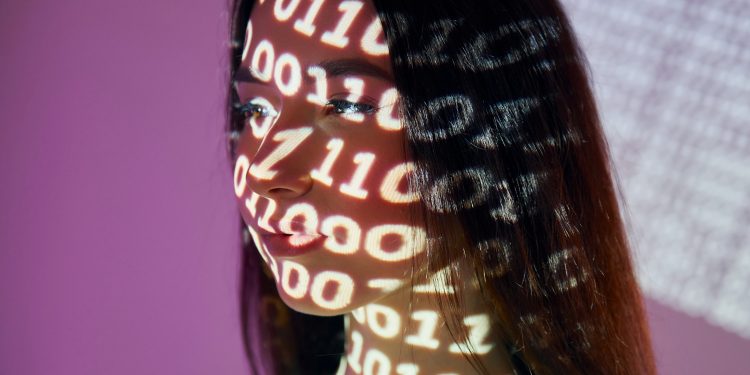The Dream of Preserving and Enhancing Mental Health
For centuries, humans have sought ways to preserve their legacy—paintings, books, and photographs tell stories of past generations. But what if memories, the core essence of personal experiences, could be stored digitally to improve mental health and cognitive well-being? Imagine a world where the moments that shape our identities could be uploaded, allowing patients to revisit cherished memories and reinforce emotional stability.
This idea, often the stuff of science fiction, is slowly edging closer to reality. As neuroscience and artificial intelligence (AI) advance, the concept of uploading human memories is transitioning from speculation to a potential tool for addressing neurological diseases, mental health conditions, and cognitive decline.
The Science Behind Memory Storage and Mental Health
Memories are more than fleeting images or thoughts; they are complex neural patterns stored across different regions of the brain. Each experience reshapes connections between neurons, reinforcing pathways that help us recall events. This process, known as synaptic plasticity, is essential not only for memory formation but also for emotional regulation and mental resilience.
Recent breakthroughs in brain-computer interfaces (BCIs) have demonstrated the possibility of mapping these neural patterns. Scientists can now decode basic thoughts, emotions, and even dreams using sophisticated AI algorithms. By exploring memory storage digitally, researchers hope to find new ways to combat mental health issues like depression, PTSD, and Alzheimer’s disease.
Current Technologies and Experiments
Brain-Computer Interfaces (BCIs) and Mental Health
Elon Musk’s Neuralink and similar initiatives are pioneering BCIs that allow direct communication between the brain and external devices. By implanting ultra-thin electrodes into the brain, these interfaces can record neural activity in real time.
In one notable experiment, paralyzed patients were able to control computer cursors and robotic arms using thought alone. Although this technology primarily aims to restore mobility, the implications for mental health are vast. Patients suffering from severe trauma or degenerative diseases could potentially relive positive memories, reinforcing mental resilience.
Example: In 2023, Brown University researchers used BCI technology to restore limb control in stroke patients by decoding neural signals. Beyond physical recovery, many participants reported reduced anxiety and improved emotional well-being, highlighting the mental health benefits of neural restoration.
Memory Decoding for Cognitive Rehabilitation
In 2021, researchers at the University of California achieved a breakthrough by using AI to reconstruct images directly from the brain. Volunteers watched video clips while brain activity was recorded, and the AI successfully recreated blurry but recognizable versions of the images they saw. This experiment underscores the potential to decode and replay positive memories, offering therapeutic benefits for individuals with mood disorders or post-traumatic stress disorder (PTSD).
Ethical and Philosophical Considerations
The prospect of uploading human memories raises profound ethical questions. If memories can be stored and replayed, who owns them? Could they be manipulated or hacked? These concerns mirror those surrounding digital privacy but on a far more intimate scale.
For mental health applications, the focus shifts to questions of consent and emotional safety. How do we ensure that revisiting painful memories doesn’t trigger further trauma? On the other hand, how can positive memory uploads be leveraged to reinforce happiness and healing?
Facts: A 2023 Pew Research Center survey revealed that 72% of Americans expressed concern about brain-computer interfaces and memory storage, citing fears over data privacy, consent, and the potential for memory manipulation.
Real-World Applications in Mental Health
Treating Alzheimer’s and Dementia
One of the most promising applications of memory uploading lies in treating neurodegenerative diseases. Alzheimer’s patients often lose recent memories first, leading to disorientation and anxiety. By storing and replaying key memories, scientists hope to help patients maintain a stronger sense of self and continuity.
Fact: The Alzheimer’s Association reported in 2023 that 6.5 million Americans aged 65 and older live with Alzheimer’s. Researchers believe that storing and replaying personal memories digitally may slow memory loss, helping patients retain a sense of identity and emotional stability.
PTSD and Trauma Recovery
Therapists are exploring ways to use memory reconstruction to help patients with PTSD reframe traumatic experiences. By selectively reinforcing positive memories or diminishing the impact of negative ones, digital memory technology could serve as a groundbreaking form of cognitive-behavioral therapy.
Case Study: A 2022 Stanford trial used VR and AI to reconstruct traumatic memories for veterans with PTSD. By guiding participants to revisit and reframe difficult experiences in a safe VR setting, 60% experienced notable symptom reduction within three months, demonstrating the therapeutic potential of memory-based interventions.
Depression and Mood Disorders
Depression often distorts memory, causing individuals to recall negative experiences more vividly than positive ones. Digital memory storage could enable patients to access joyful moments, potentially reshaping their emotional landscape and fostering hope.
Challenges and Limitations
Despite the allure, there are immense hurdles to overcome. The human brain consists of approximately 86 billion neurons, each with thousands of connections. Mapping even a fraction of this complexity is daunting.
Additionally, memories are not static files. They evolve, often becoming distorted over time. Capturing this dynamic process adds another layer of complexity to the task of digital storage and its therapeutic applications.
The Role of Artificial Intelligence in Mental Health
AI is at the forefront of decoding and reconstructing memories. Neural networks capable of mimicking brain activity are driving innovations in memory research. Google’s DeepMind, for instance, has developed AI models that predict brain functions with remarkable accuracy, suggesting that digital memory storage could one day rely heavily on AI algorithms.
The potential mental health applications of AI-driven memory storage include personalized treatment plans based on neural activity, enabling more precise and effective interventions.
Example: MIT researchers developed an AI model capable of predicting memory degradation with 80% accuracy in patients with early dementia. By identifying vulnerable memories, doctors could prioritize digital storage, potentially prolonging cognitive function.
The Future of Memory Uploading and Mental Health
Looking ahead, advancements in nanotechnology and quantum computing could pave the way for more efficient data storage and faster brain mapping. Nanobots may one day navigate neural pathways, recording information at a granular level without invasive surgery.
For mental health professionals, this technology could represent a paradigm shift. The ability to preserve and revisit memories could unlock new treatments for anxiety, depression, and neurodegenerative diseases. Partial memory uploads could become a reality within the next few decades, providing new hope for patients worldwide.
Shaping Mental Health Through Memory Technology
The pursuit of uploading human memories is more than a technological feat—it could revolutionize mental health and cognitive care. By merging neuroscience, AI, and advanced technology, researchers are opening doors to treatments for Alzheimer’s, PTSD, and depression. The ability to store and revisit key memories could provide emotional stability and reduce cognitive decline.
As science advances, this technology may shift how we view therapy and mental health interventions, creating a future where accessing preserved memories plays a critical role in healing. While the full realization remains years away, the potential to bridge the gap between memory preservation and mental well-being is within reach, shaping new ways to address emotional and neurological conditions.
Like this article? Subscribe to our monthly magazine for more insights into the intersection of health, technology, and neuroscience.









